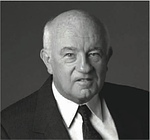Plate Tectonics: A Revolutionary Discovery
On May 23 and 24 Lamont Doherty Earth Observatory is planning a symposium to celebrate the 50th anniversary of plate tectonics and to honor its scientists who played a decisive role in its discovery. There will be presentations by distinguished senior scientists from around the country as well as mid-career researchers who continue to investigate plate tectonic processes.It’s hard to believe that only fifty years ago many scientists including Dr. Maurice Ewing, Lamont’s formidable director, were unconvinced that continents could plow through ocean basins. Then in 1966 an interesting thing happened. A handful of scientists led by primary contributors Dr. Lynn Sykes and Dr. Walter Pitman III from Lamont proved unequivocally that the earth’s outermost layer is composed of plates that do indeed move.
Referred to as plate tectonics, this theory revolutionized the study of the earth’s crust. It provided a framework for understanding the formation of mountain ranges, volcanoes and earthquakes, ocean basins, mid-ocean ridges and deep-sea trenches, the evolution of climate and the distribution of natural resources.
Dr. Marcia McNutt, who recently became the first woman to head up the prestigious U.S. National Academy of Sciences, has called the discovery of plate tectonics “one of the top ten scientific accomplishments of the second half of the 20th Century.”
Because the Nobel Prizes do not recognize achievements in the earth sciences, the Vetlesen Prize was established in 1959 to fill this void. On January 21,2000, Sykes, Pitman and Jason Morgan from Princeton were awarded the Vetlesen Prize for Earth Science Achievement for their 1960s work to establish geology’s unifying theory of plate tectonics.
The award explained that Dr. Pitman was instrumental in interpreting marine magnetic anomalies around mid-ocean ridges. These ridges, the result of seafloor spreading, proved the existence of plate motion. The award stated that “Dr. Sykes contributed significantly to the application of seismology in formulating and refining plate tectonics. He proved the importance of mid-ocean ridge transform faults in accommodating plate motion.” By the time of Sykes’s co-authored 1968 paper demonstrating how seismological data can be explained in terms of plate tectonic theory, most scientists had seen the light.
Dr. Lynn Sykes, a long time resident of Palisades, became a member of the Lamont Doherty staff in 1961 after his graduation from M.I.T. where he received a five-year scholarship followed by a PhD from Columbia University. He has authored more than 135 scientific journal articles, including 35 on the subject of nuclear-test verification. He was a member of the U.S. delegation that traveled to the Soviet Union in 1974 to negotiate the Threshold Test Ban Treaty, and has testified before the U.S. Congress numerous times as an expert on nuclear-test verification.
Sykes is a member of the National Academy of Sciences, the American Academy of Arts and Sciences, a Fellow of the Geological Society of America and the American Geophysical Union, which honored him with its Macelwane and Bucher awards. He has also received the Medal of the Seismological Society of America. In 1986, The Federation of American Scientists presented Sykes its Public Service Award for working to revive scientific and public interest in a comprehensive nuclear test ban treaty. While officially retired, he continues his research in detecting earthquakes and is hard at work writing books about his involvement in nuclear disarmament and plate tectonics.



